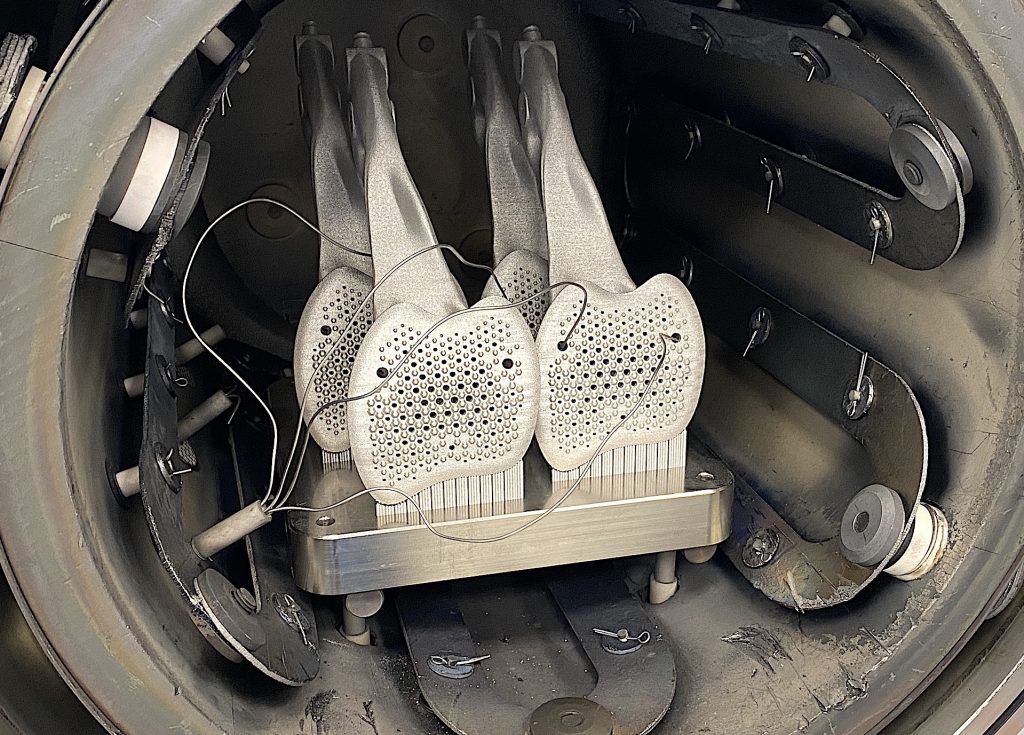NASCAR team Stewart-Haas Racing has turned to 3D printing in a bid to improve the performance of the brakes fitted to one of its challengers for this year’s championship.
Working with Autodesk, Stewart-Haas has managed to use Fusion 360 generative design software to make its brake pedals 32% lighter, while raising their rigidity and overall safety. 3D printed via Renishaw’s RenAM 500Q system, the revamped pedal has now been deployed on Cole Custer’s 750 bhp Ford Mustang, with the aim of sending his lap times tumbling and helping him climb the Cup Series standings.
“Being able to utilize both Autodesk’s generative design and Renishaw’s metal printing capabilities will unlock doors not available previously using traditional manufacturing methods,” said Walter Mitchell, Engineering Integration Manager at Stewart-Haas Racing, “leading to increased performance, higher speeds and decreased lap times.”
Putting the brakes on weight
Like any motorsport, NASCAR is all about fine margins and teams pushing their designs to the absolute limits of the sport’s regulations, to gain a competitive edge. With its cars currently sat in 10th, 23rd, 24th and 28th in the championship, Stewart-Haas is no different, and the team adopted 3D printing earlier in the season with the aim of developing upgrades that boost its drivers up the order.
Prior to switching to additive manufacturing, Stewart-Haas first partnered with Autodesk, using the iterative design features of Fusion 360 to refine and simulate the performance of its new brake pedal. Compared to the conventional part, the team were able to revise its design to feature complex latticed internal structures, and projections showed it to be much stiffer and lighter than before.
According to Mike Grau, who leads Autodesk’s research team, Fusion 360 proved critical to the pedal’s optimization. “In the past, with additive technologies, you had the issue of ‘How do you create the simulation design?’” he told DesignNews. “You have all these complex lattice structures and hollow structures. How do you create an assembly design, but also deliver a simulation design?”

To accomplish this, Grau says that Autodesk and Stewart-Haas decided to reduce the number of individual elements within their pedal design down to the bare minimum, to make things more manageable. In doing so, the firms’ engineers were able to create a lattice with tens of thousands of elements rather than millions, which was vital in allowing them to run the simulation processes they needed to.
Having revamped its brake pedal’s design, Stewart-Haas sent it over to Renishaw, where it was 3D printed from titanium and sand-blasted to provide it with an end-use finish. However, given the component’s safety-critical nature, the team needed to stress-test it under race conditions prior to use, thus they subjected it to the full 3,000-pound load limit of its custom-made test fixture.
Under duress, the upgraded pedal not only managed to resist failure, but it displayed 50% higher stiffness than its predecessor. For Autodesk, the project has ultimately proved the potential of its software within motorsport part optimization, and even though the process took two months to complete, the firm maintains that this timescale could be reduced dramatically in future.
“[Initially] It took us a day to create one unit cell,” concluded Grau. “Two weeks later, we were able to create 30 unit cells in 30 minutes, but it crashed the computer a few times. Six months later we could do a whole lattice of a design just within minutes. The progress we’re making is almost exponential if you look at where we came from and what we do.”
Braking barriers with 3D printing
Automotive manufacturers are increasingly turning to topology optimization and generative design as a means of developing 3D printable parts with end-use applications. Just last year, Fraunhofer IAPT worked with Fiat Chrysler Automobiles engineers to consolidate twelve components from one of its sports cars into a single 3D printed suspension part, which weighed 36% less than the original.
Likewise, Porsche has also partnered with TRUMPF and MAHLE to additive manufacture upgraded engine pistons for its flagship 911 supercar. Using an AI-led 3D printing process, the manufacturer has been able to integrate a cooling duct into the ‘crown’ of experimental pistons, which once fitted, effectively added 30 bhp to the vehicle’s engine.
In terms of brakes specifically, several automotive firms have toyed with the idea of 3D printing related components over the last couple of years. In July 2019, Carbon Performance used its proprietary SK3L370N platform to 3D print brake calipers, shortly after Bugatti managed to achieve something similar, producing titanium calipers with an SLM 500 system.
The nominations for the 2021 3D Printing Industry Awards are now open. Who do you think should make the shortlists for this year’s show? Have your say now.
To stay up to date with the latest 3D printing news, don’t forget to subscribe to the 3D Printing Industry newsletter or follow us on Twitter or liking our page on Facebook.
For a deeper-dive into additive manufacturing, you can now subscribe to our Youtube channel, featuring discussion, de-briefs and shots of 3D printing in-action.
Are you looking for a job in the additive manufacturing industry? Visit 3D Printing Jobs for a selection of roles in the industry.
Featured image shows Cole Custer’s Stewart-Haas Racing Ford Mustang. Photo via NASCAR.



